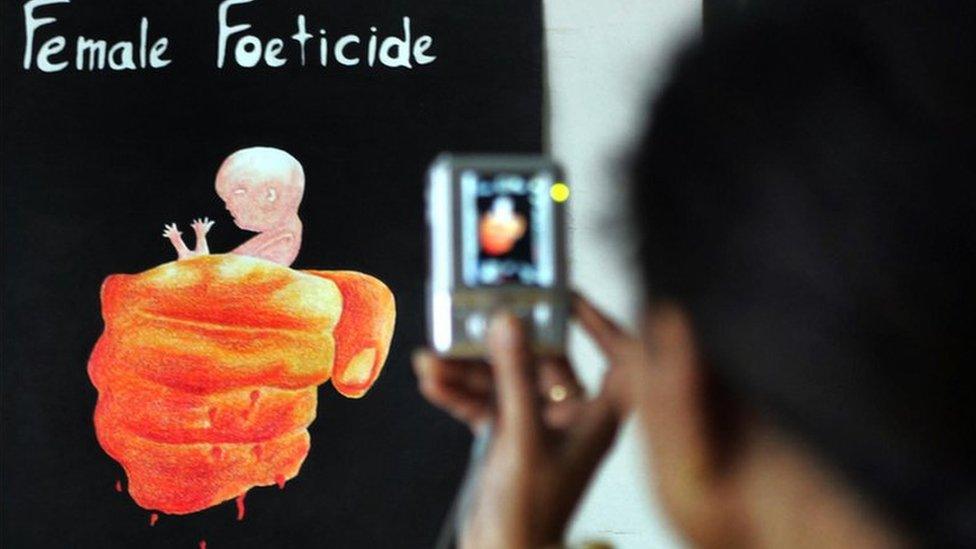NFHS: Does India really have more women than men?
- Published
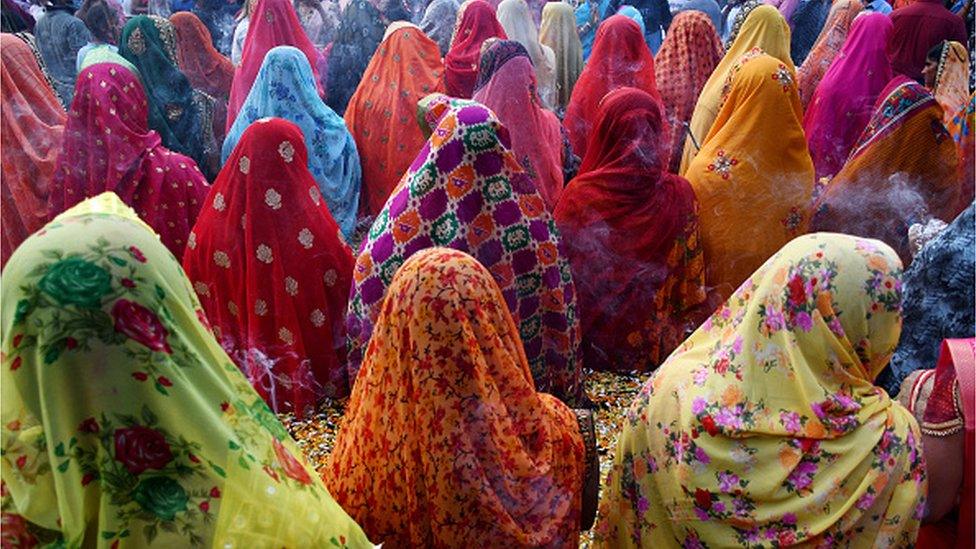
The Census has repeatedly shown that there have been more men in India than women
Does India really have more women than men now?
According to the latest National Family Health Survey (NFHS) data, released by the Indian government recently, there are now 1,020 women for every 1,000 men.
Experts advise caution while interpreting the data - the survey covers only about 630,000 of India's 300 million households - and say the real picture will emerge only once we get the census data.
"The census surveys the entire population of the country and, therefore, provides a more accurate account of the overall sex ratio," the director of the Population Fund of India, Poonam Muttreja, told the BBC.
But the numbers, external have made headlines in India, with some claiming that they point to significant societal shifts in a country where a preference for sons has historically led to a very skewed sex ratio in favour of men.
The health ministry said this was the first time ever that the female population had surpassed the male population in India. One official said, external this was due to the "measures taken by the government for women's empowerment".
Media reports hailed it as a "massive achievement" and "a demographic shift". One journalist wrote that India had "now entered the league of developed nations".
But campaigners say the numbers just don't add up and describe the government claim as "absurd" and "next to impossible".
"Over 100 years, our census has repeatedly shown that there have been more men in India than women," researcher and activist Sabu George said.
"According to the last census in 2011, there were 940 women for every 1,000 men and the child sex ratio [which counts children from nought to six years] was really abysmal at 918 girls for 1,000 boys, so how can there be such a drastic change in just 10 years?" he asked.
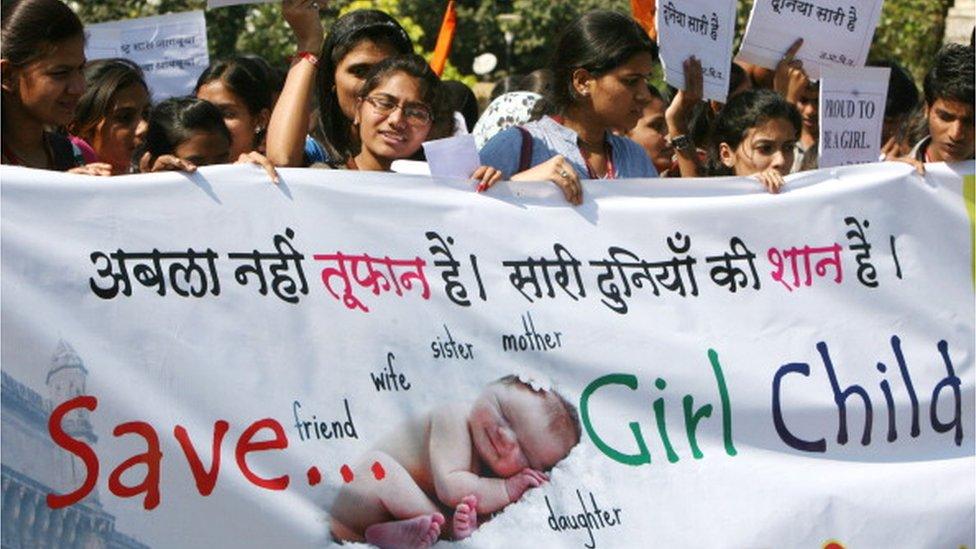
Measures to prevent female foeticide have failed to show results so far
India has long been called "a country of missing women" - a phrase first used in an essay by Nobel Prize-winning economist Amartya Sen in 1990 when the gender ratio had hit rock bottom at 927 women for every 1,000 men. He had put the number of missing women at 37 million.
India's preference for sons is rooted in a widely-held cultural belief that a male child would carry forward the family legacy and look after the parents in their old age, while daughters would cost them dowries and leave them for their matrimonial homes.
Campaigners say this anti-girl bias, coupled with the easy availability of antenatal sex screening from the 1970s, led to tens of millions of female foetuses being eliminated through sex-selective abortions, known as female foeticide, leading to the dramatically skewed sex ratio.
In 1994, the Pre-Natal Determination Test (PNDT) Act outlawed sex-selective abortions and in 2002, it was amended to include gender selection even at the pre-conception stage. But campaigners say many sex-selective abortions are still carried out illegally.
Experts say women outlive men and that's why the total sex ratio is always higher than the sex ratio at birth. But, Mr George says, the figure of 1,020 is just not plausible.
"If over 30 to 40 years we have eliminated tens of millions of girls, our actual deficit of birth would be even larger by 2021. And if there's such a large deficit of women, how is it even possible to believe that this number is credible?"
Demographers say if there's no discrimination against girls then the ideal sex ratio at birth is expected to be 952, but the latest survey puts it at 929. Mr George says it means that "there's still a 23-point - or 2% - difference between the ideal and the reality".
"It shows we are still killing millions of girls," he said. "If there are 26 million births in India every year, they add up to 130 million births in the past five years. This means we've killed 2.6 million girls in just the past five years. This is a disgrace for the country. There's nothing to celebrate."
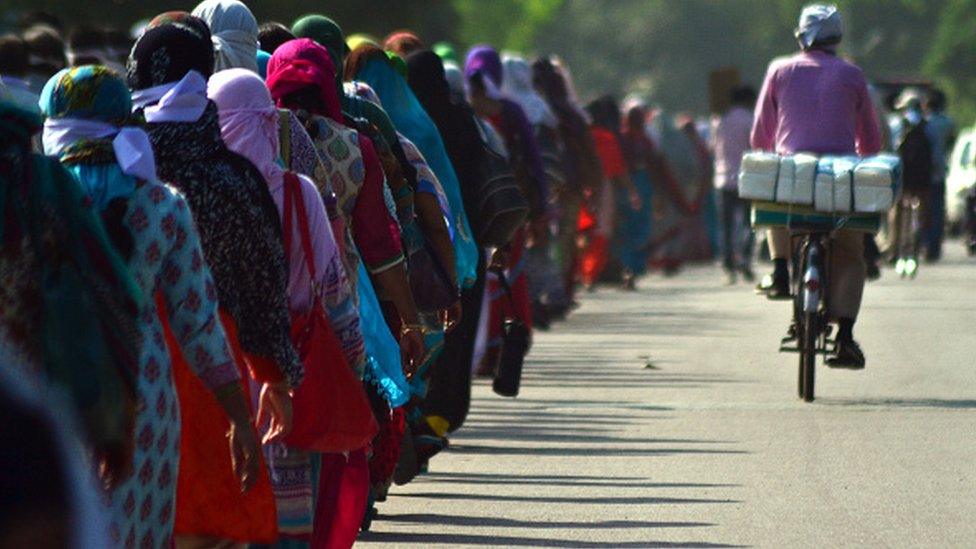
According to the last census in 2011, there were 940 women for every 1,000 men in India
In the past, the government has admitted that its strategy has failed to put an end to female foeticide.
Former Prime Minister Manmohan Singh described it as a "national shame" and called for a "crusade" to save India's girls. Soon after taking over in 2014, Prime Minister Narendra Modi appealed to Indians to stop killing their daughters. A year later, he launched a scheme, external asking people to save their daughters and educate them.
But despite the measures, there has been little change in attitudes.
In recent years, we have reported on newborn girls found abandoned on streets, buried in shallow graves or discarded in rivers and drains. And reports from across India say illegal sex determination clinics are thriving.
Mr George says some states, such as Rajasthan and Haryana, have worked to improved their sex ratio, but most of the big states with large populations are yet to make much headway in controlling female foeticide.
"I think the survey numbers are unreliable. There's no plausible way this could happen. I think the census data, whenever it comes out, will not show a substantive improvement in child sex ratio. In fact, I'd be surprised if there's no decline," he says.
- Published23 May 2011

- Published24 October 2016
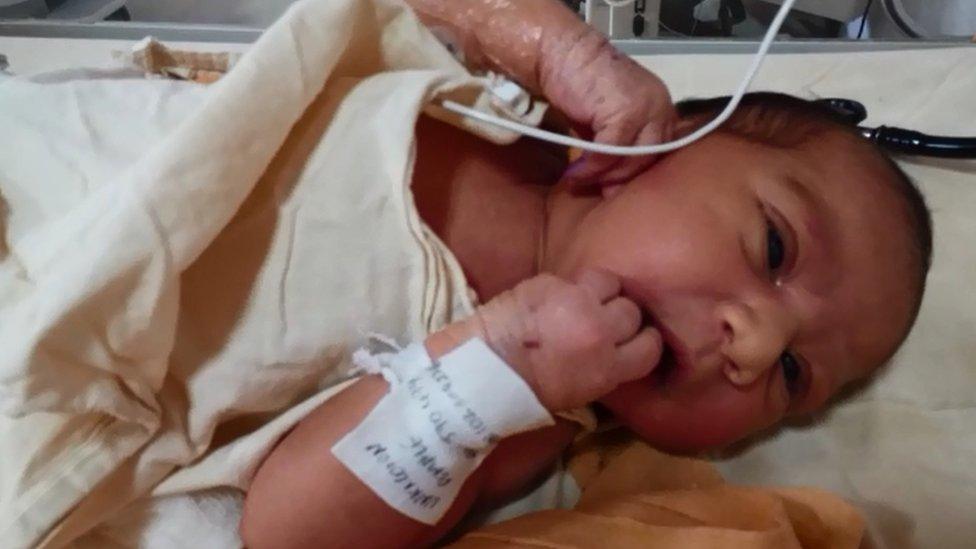
- Published5 December 2019
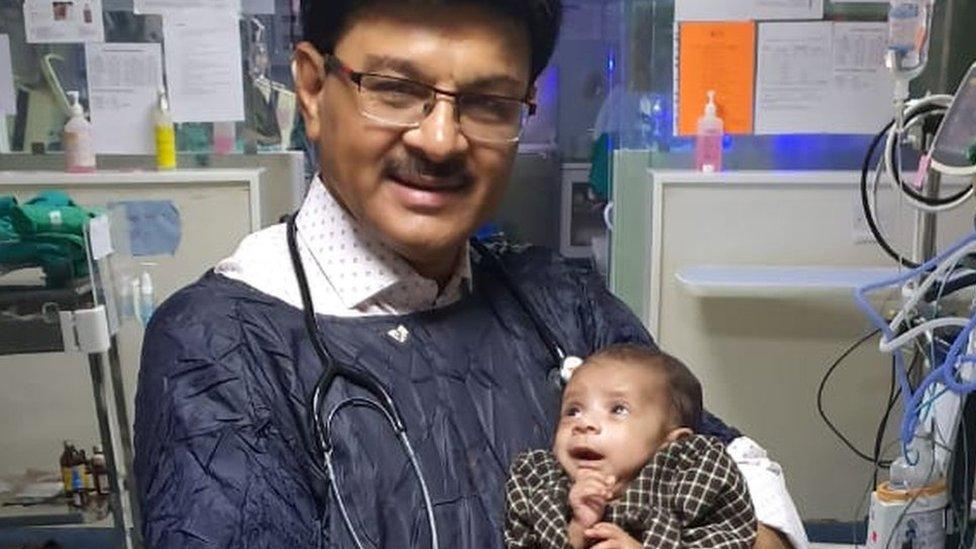
- Published18 November 2021
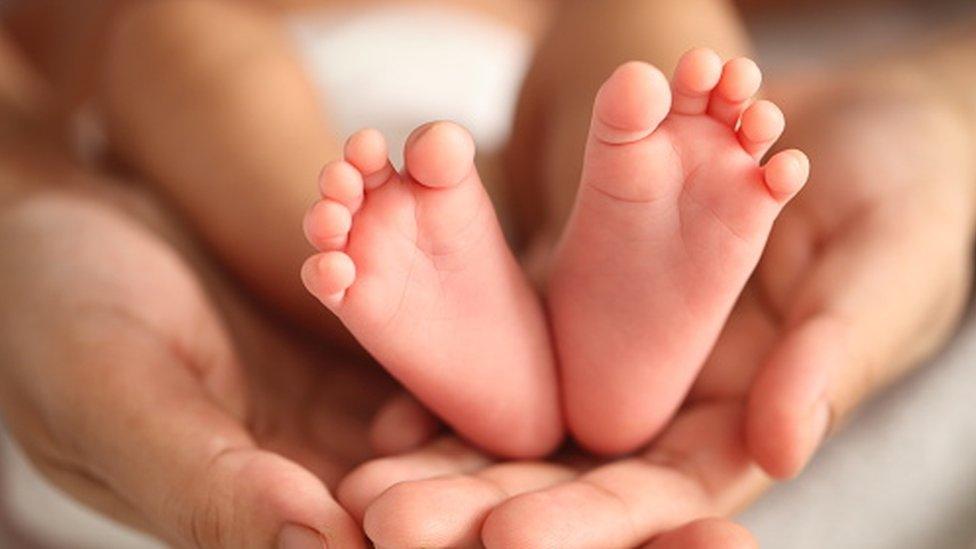
- Published6 March 2017
